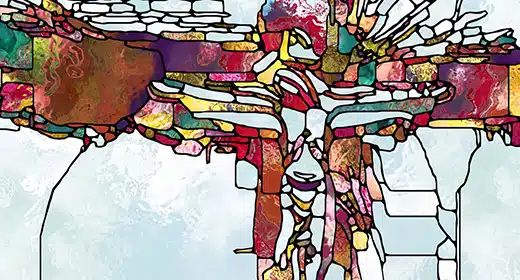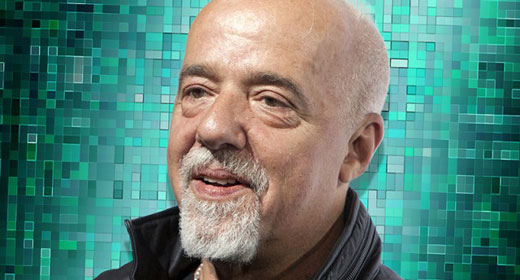by Tim Brieske, M.D: As far as we know, human beings are the only life forms on the planet with conscious awareness…
The ability to know that we know and to be aware that we are aware. We’re able to perceive both our inner and outer environments and we can make conscious choices about where we direct one of our most valuable gifts: our attention.
As many great wisdom traditions teach, whatever we put our attention on expands in our experience. We can focus on grievances, shortcomings, and pain, and those qualities will grow in importance to us. Or we can instead choose to shift our attention to beauty, love, and laughter, and we will perceive their expansion in our life.
When I’m practicing medicine, I realize a feeling of love as I relate to those seeking care. I find that as I direct my attention and shift my perception towards love and connection, the layers of my mind, intellect, and ego become less rigid, more elastic, and relatively transparent. This has the effect of allowing the love and spiritual energy we all possess to be communicated in a more authentic, less refracted way.
A Shift of Perception
In co-facilitating the Chopra Center’s Healing the Heart workshop, I’ve had the opportunity and honor to witness participants as they shift their perception from constriction to expansion, from fear to love, and from grievances to miracles.
In a guided five-step process developed by Chopra Center co-founder Dr. David Simon, they let go of the emotional pain, conditioned beliefs, and stories that are no longer serving them. In essence, they are gently shifting from an old way of perceiving themselves, their past, and their lives, to a new perception that allows for possibilities and fulfillment that previously seemed unavailable.
At the beginning of the workshop, I ask participants to do a simple exercise that is amazingly profound. After a group meditation, they pair up and spend a few minutes looking into another person’s eyes. I ask the participants to become aware of the emotions and feelings they are experiencing. Then I ask them to close their eyes and bring their awareness to their hearts, that place of love, compassion, empathy, and humility. Then I have them once again look into the eyes of the person before them and pay attention to the emotions and feelings they are aware of now that they have shifted their perception towards love.
Most often they realize they are really seeing with their heart and soul the divine expression before them. There are often a lot of tears as people recognize the inner beauty and wholeness radiating from their partner’s eyes. This is known as the practice of namaste, a Sanskrit word that means “the divinity in me honors the divinity in you and we are one.”
Exercise: Seeing with the Eyes of Love
We may have been taught that giving love is important and loving ourselves is selfish. But self-compassion – truly loving ourselves for who we authentically are, both the light and the dark – is actually the surest way of cultivating and communicating the love within us with others.
The partner you have in this exercise is yourself. You can try it right now using a mirror to look into your eyes as you ask yourself to become aware of the emotions and feelings you have. Now close your eyes and orient your perception towards your heart, becoming aware of its love, compassion, empathy, and humility. Then open your beautiful eyes and see yourself with your own sweet heart. Can you feel the difference? The one thing you shifted was your perception towards the field of love, from your head to your heart. I encourage you to take a few minutes each day to practice this exercise, honoring your own divinity, and putting your attention on having love and compassion for yourself.
Extending Compassion to the Ego
Life can be challenging, and most of us have a tendency to judge ourselves when we make mistakes or suffer setbacks. Offering yourself positive regard and love as you look into your eyes will naturally begin to soften the ego’s criticism. Try extending your compassion to the ego, recognizing that it is like a fearful child who only resorts to bullying and control out of a desperate need to feel safe and secure.
Once you begin to honor the divinity within, everyone around you will also begin to look different. You will find it easier to realize your intentions because when you orient yourself in the field of love, constrictions naturally dissolve.
If your current perceptions aren’t bringing you the love, happiness, and fulfillment you desire, I invite you to experiment with your gift of conscious awareness, noticing where you are putting your attention, and making conscious choices to shift your perceptions. Don’t put it off. As the Sufi poet Rumi writes, “Time is a factory where we all slave away, earning enough love to break our own chains.”
None of us knows how long our existence on this planet will last, and we don’t want to wait. We have the ability to experience our spiritual loving essence in a way that promotes compassion, empathy, and self-awareness.
Why not do it now?
Healing the Heart
At the Chopra Center’s Healing the Heart workshop, we guide participants in a unique healing process developed by Chopra Center co-founder Dr. David Simon that enables them to identify and release the emotions they struggle with, and – most important – fill the newly opened space in their hearts with love, fulfillment, and joy. Here is a shorter version of the process that you can use at home:
Step 1: Preparing for Freedom
Begin by centering yourself and preparing for the release process. In a comfortable, seated position, close your eyes and take a few deep breaths, releasing any tension from your body. Meditate for a few minutes or simply observe the inflow and outflow of your breath for a while to quiet your mind.
Step 2: Identifying the Emotional Toxicity in Your Life
With your awareness in your heart, ask yourself, “What experiences from my past are creating pain for me in the present?” Begin with the most recent hurt and replay the story in your mind, noting what happened what started it, what was said, how it ended, and how you felt. Did you feel angry, hurt, afraid, abandoned, neglected, sad, betrayed?
Step 3: Mobilizing Emotions
In a journal or on a piece of paper, describe the painful event and your feelings. Write about the effect this situation is having on your heart and soul. Notice any feelings or sensations that arise and breathe into them. With each exhalation, you free some of the energy that has been trapped inside the feelings, allowing it to circulate. Writing is a valuable tool for mobilizing the emotions we’ve repressed, moving pain from the subconscious to conscious awareness so that it can be released.
Step 4: Release
Release the emotion through a physical ritual. Experiment to find what works best for you. You can dance with abandon, burn the paper on which you’ve written your painful story, get a massage, or go on a long run. Let your body release the tension that is stored with the emotion. Another powerful release tool is sharing your story with someone you trust. Ask the person to listen without interrupting or offering feedback. Expressing your story aloud releases some of its emotional charge.
Step 5: Celebration!
Reward yourself for uncovering and releasing the pain of the emotion. Nourish yourself: listen to your favorite music, buy yourself a present, or enjoy a delicious meal.









































